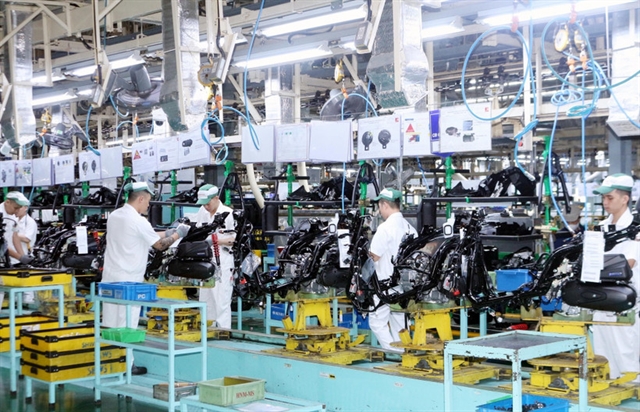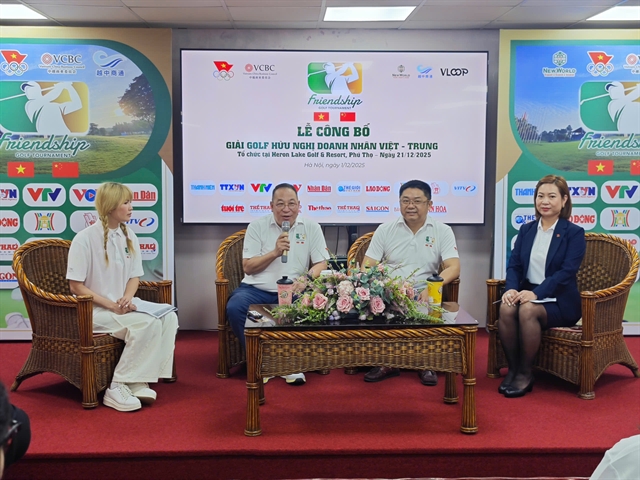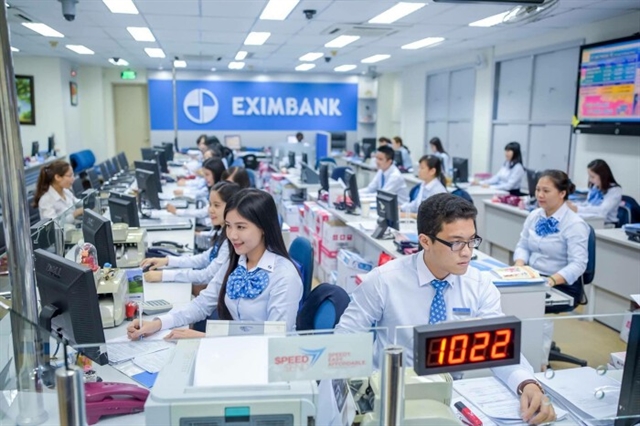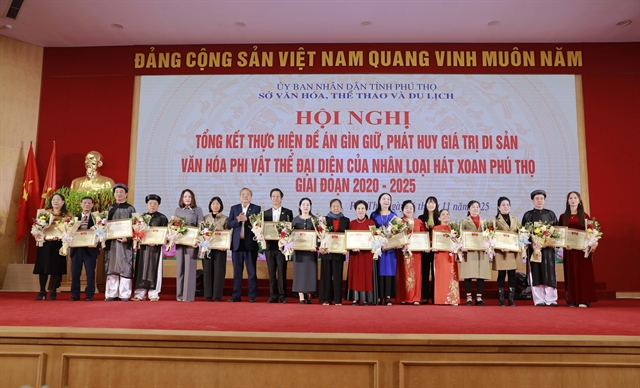 Economy
Economy

The State Bank of Việt Nam (SBV) on Friday announced it would cut several key interest rates by 0.25 percentage points, starting from September 16, to support economic growth.

|
| The State Bank of Việt Nam's headquarters in Hà Nội. Many key interest rates will be reduced from September 16. Photo SBV |
HÀ NỘI The State Bank of Việt Nam (SBV) on Friday announced it would cut several key interest rates by 0.25 percentage points, starting from September 16, to support economic growth.
The rate cuts were the first by the SBV since October 2017.
Accordingly, the annual refinancing rate and rediscount rate will be lowered from 6.25 per cent to 6 per cent, and from 4.25 per cent to 4 per cent, respectively
The annual overnight electronic interbank rate and rate of loans to offset capital shortage in clearance between the central bank and domestic banks will be also cut to 7 per cent.
The interest rate of bids of valuable papers through the open market operations will be reduced from 4.75 per cent to 4.5 per cent annually.
According to the SBV, it previously took monetary policy measures to stabilise interest rates in the context of rising interest rates in the international market, which contributed to macroeconomic stability and support growth at reasonable levels.
However, it has now decided to make the new move as the global economy has become more volatile and less favourable, while central banks of many countries, including the US Federal Reserve (Fed) and the European Central Bank (ECB), have cut their key interest rates.
The cut is made in the context that in the domestic market, the macroeconomy continues to be stable, inflation was under control, and the monetary and foreign exchange markets were stable, the SBV said in the statement.
Experts have also agreed with the central bank’s move.
Banking and finance expert Cấn Văn Lực told Việt Nam News that the cut at this moment was suitable, especially in the context that the economy was slowing and central banks in many countries have cut interest rates.
“It is estimated that some 40 countries worldwide have so far this year cut interest rates. After making a rate cut for the first time in more than a decade in July, the Fed is likely to cut the rates a second time at its meeting later this month,” Lực said.
Lực said the cut would not put pressure on the country’s inflation and the exchange rate as the inflation was low and the exchange rate was relatively stable.
Data from the General Statistics Office showed that the country’s inflation cooled to 2.57 per cent in August 2019, down from 3.52 per cent in August 2018. The rate was the lowest rise for the past three years. In 2019, inflation is projected to average at 2.9 per cent, buoyed by weak transport inflation due to a drop in average oil prices in the year.
The exchange rate was also nearly steady, with the US dollar listed at commercial banks to inch up by only some VNĐ10 for buying and VNĐ30 for selling against the end of 2018. The central bank’s USD/VNĐ daily reference exchange rate also rose slightly by 1.28 per cent against end-2018.
According to Lực, the new rate cut will also help interest rates listed at commercial banks to cool in the context that some banks have increased their deposit rates to 8.55 per cent per year.
The central bank’s key rate cut is considered a reference for the market to follow suit. It would also be an effective measure to support liquidity for commercial banks, helping them cut input costs so as to ensure the stability of lending interest rates. VNS



 Ảnh JP Morgan.png)
